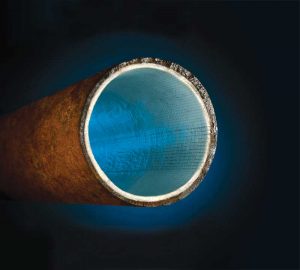
By Ryan Graham
The average commercial building in the U.S. is approximately 53 years old,1 and considering the average performance lifespan of a building plumbing system is approximately 30 years, there are thousands of commercial buildings with pipes suffering from age-related build-up and blockage, rust, cracks, and leaks. Without question, the risk of failure in plumbing systems is high.
For these reasons, pipes in older commercial buildings—ranging from apartments, assisted living centers and hospitals to office buildings, resorts, and casinos—need repairs, replacement, or rehabilitation. Traditionally, total pipe replacement involves removing all old pipes and replacing them with new ones. This requires contractors to cut and remove the drywall, flooring, fixtures, and finishes to reach the plumbing systems. This type of demo can also potentially expose lead and asbestos, which are harmful human carcinogens. Even dust created from this type of work can contaminate living spaces and cause health issues for tenants. The abatement cost of these materials, if found or uncovered, is extremely high. Depending on the building, tenants, guests, staff, and patients are unable to occupy those spaces and must be relocated for several days, weeks, or even months while the demolition, pipe replacement, and renovation takes place.
A better plumbing repair alternative
In-building pipe rehabilitation can be an attractive alternative to traditional plumbing repair methods, given the exorbitant cost, mess, time, investment, and disruption of a total pipe replacement. Modern in-building pipe rehabilitation offers complete restoration of vertical and horizontal plumbing systems located within walls and under floors, without the need for pipe replacement and the costly, invasive demo and repairs associated with it. This non-invasive form of pipe repair is ideal for vent, stack, and branch lines, and horizontal sewer pipes up to 304 mm (12 in.) in diameter, allowing buildings to remain open and occupied during the repair process.
In-building pipe rehabilitation is not new. In fact, for the last 20 years, it has proven to be more efficient, cost-effective, and less invasive than traditional commercial building plumbing repairs and replacement methods.




